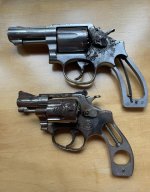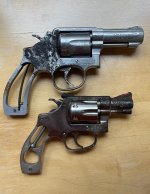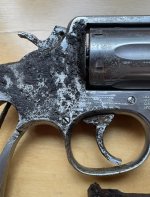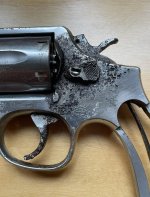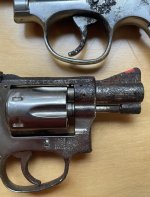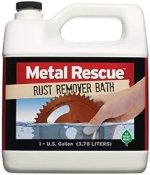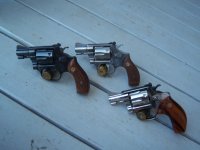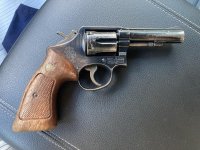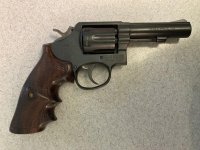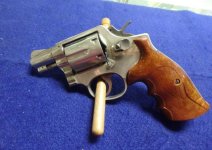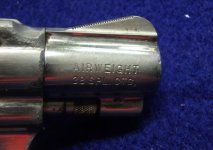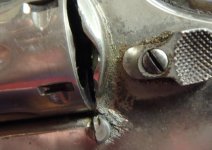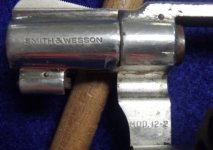samandglove1
Member
Just got a hold of a couple really rough stainless steel pieces. A rusty 1 7/8" model 34 (with surface rust and a little pitting) and a tremendously rusty 3" model 65 (with heavy surface rust and deep pitting). Not sure how stainless guns got so rusty, but there you have it. I was told that they were left in a shed, in a cardboard box wrapped in a rag (probably damp in the humidity).
I'm actually excited for the project. I soaked them in WD-40 and Kroil for a bit to remove a layer of rust and get the cylinders open, but now I want to get a little more aggressive. I was thinking about some kind of bath in a large ultrasonic cleaner and then maybe go ham with a dremel. Obviously, I don't want to beat the heck out of it, but I also don't mind being aggressive.
Any advice?
I'm actually excited for the project. I soaked them in WD-40 and Kroil for a bit to remove a layer of rust and get the cylinders open, but now I want to get a little more aggressive. I was thinking about some kind of bath in a large ultrasonic cleaner and then maybe go ham with a dremel. Obviously, I don't want to beat the heck out of it, but I also don't mind being aggressive.
Any advice?

